User Guide: How to Create a Mock Server with Postman
When testing APIs, there’s often a need to create a mock server due to business requirements. So, how do you create a mock server using Postman? In this article, I'll show you how to create a mock server using Postman.
When testing APIs, there’s often a need to create a mock server due to business requirements. So, how do you create a mock server using Postman? In this article, I'll show you how to create a mock server using Postman.
What is a Mock Server?
A mock server is a virtual server environment that mimics a real server. The main reasons for using a mock server in API testing are:
- Test Even if the Actual API Server is Incomplete
You can test APIs by setting up a mock server even if the API is still under development. - Easily Respond to API Specification Changes
Mock server implementations can be changed freely, making it easier to respond to changes in API specifications. - Not Affected by Communication Errors and Delays
Since no actual communication is involved, testing can be done unaffected by network conditions. - Easy for Load Testing
Performance testing is easier because requests can be accepted stably even when a large number of requests are sent. - Easy to Build Automated Tests
By defining expected inputs and outputs in advance, you can run tests automatically.
By using a mock server in this way, API testing becomes easier and development efficiency is improved. It's advisable to utilize it throughout the entire testing process for optimal results.
About Postman's Mock Servers
Postman is a very popular API testing tool and it comes with built-in support for mock servers. Postman's mock server can simulate the behavior of real servers, making the testing process more efficient.
Key Features of Postman Mock Servers
Postman’s built-in mock server provides a very useful function that enhances API testing efficiency.
- Easy to Implement: Launch a mock server and prepare API requests with just a few clicks using Postman.
- Dynamic Responses: Use JavaScript in pre-request scripts to dynamically create response data.
- Multiple Mock Samples: Generate multiple mock samples for the same API endpoint. This allows developers to test different scenarios and responses.
How to Use Postman's Mock Servers
So, how can I use a mock server in Postman? Below are the steps to easily set up a mock server in Postman.
Setting Up a Mock Server
- Create a Request: In Postman, create a request and save it to any API in your collection.
- Save the Response: After sending the request, save the returned response as an example.
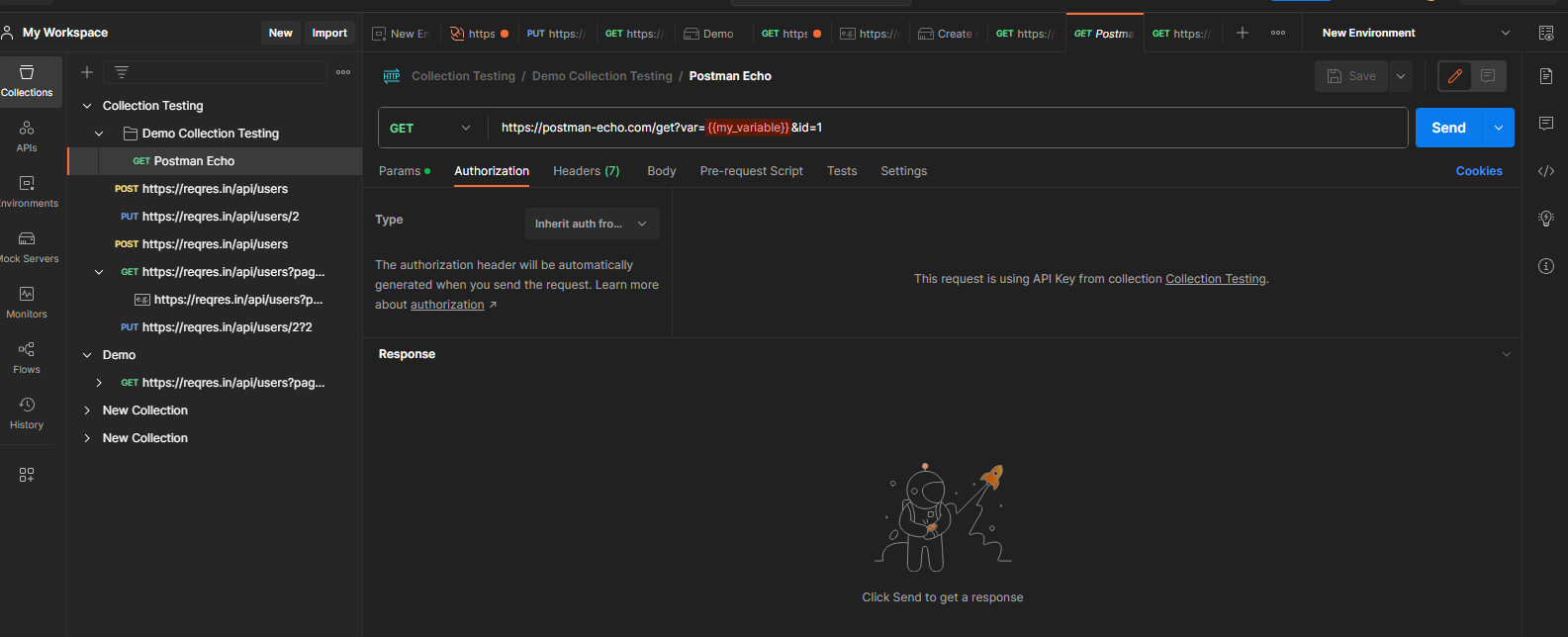
- Create a Mock Server: Click the "..." next to the collection in the sidebar and select "Mock Collection." Then enter a name and click to Create a Mock Server.
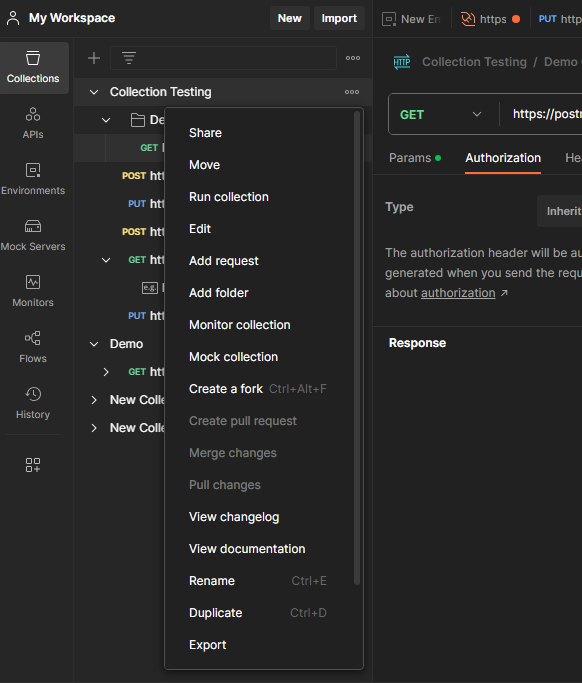
- Swap URLs: Copy the Mock URL provided by Postman and replace it with the Base URL.
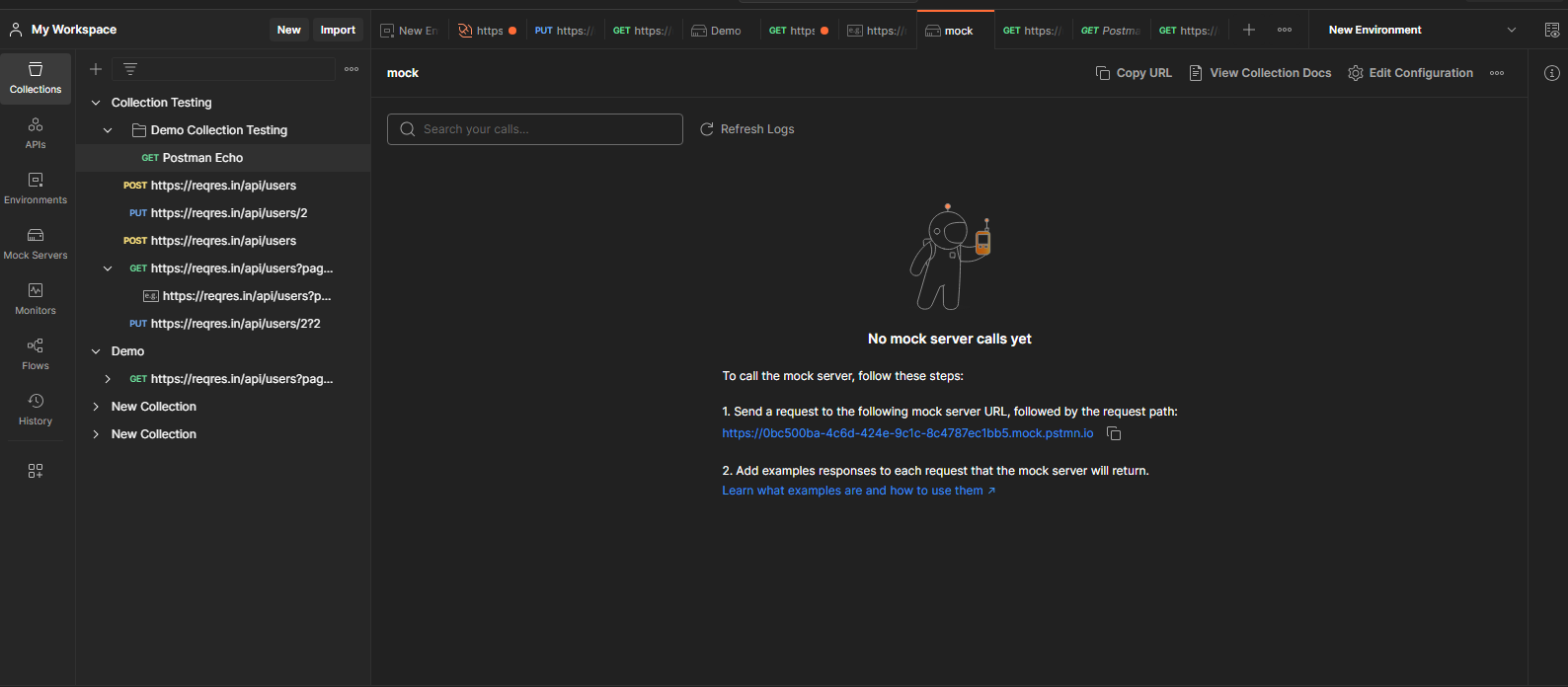
- Testing the Mock Server: By clicking the "Send" button, Postman will return the previously saved example response from the mock server.
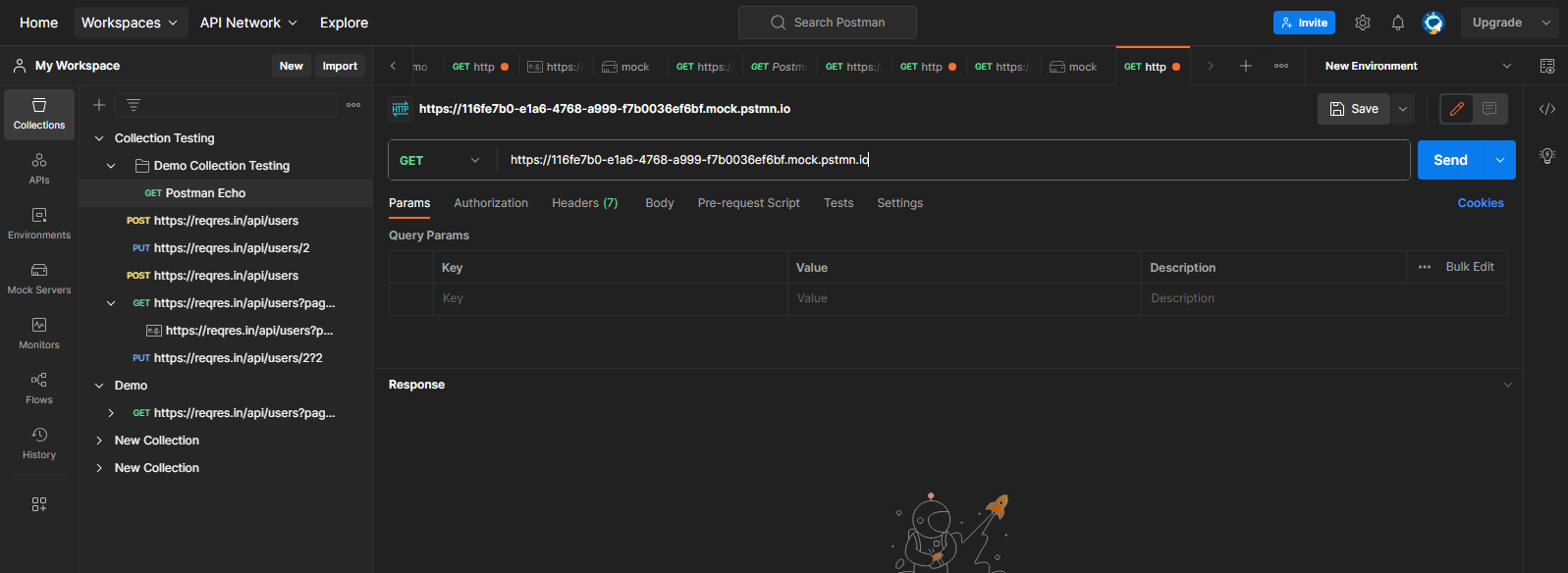
Advanced Settings for Mock Servers
- Naming: Provide a name for the mock server.
- Delay Settings: Set the response delay time for the mock server.
- Privacy Settings: To make the mock server private, add your Postman API key to the request headers before sending requests to the mock server.

EchoAPI: Offering a More Robust Mock Server
If you're looking for API mocking, EchoAPI is definitely helpful. The built-in mock server allows you to simulate real data through very intuitive operations. EchoAPI’s mocking functionality allows you to perform no-code mocking, so you don’t have to wait for the backend API development to complete.
Quickly Mocking
When you open "Data Schema" and enter a value with a dollar sign ( $ ), it will prompt you with related mock function options for you to choose from.
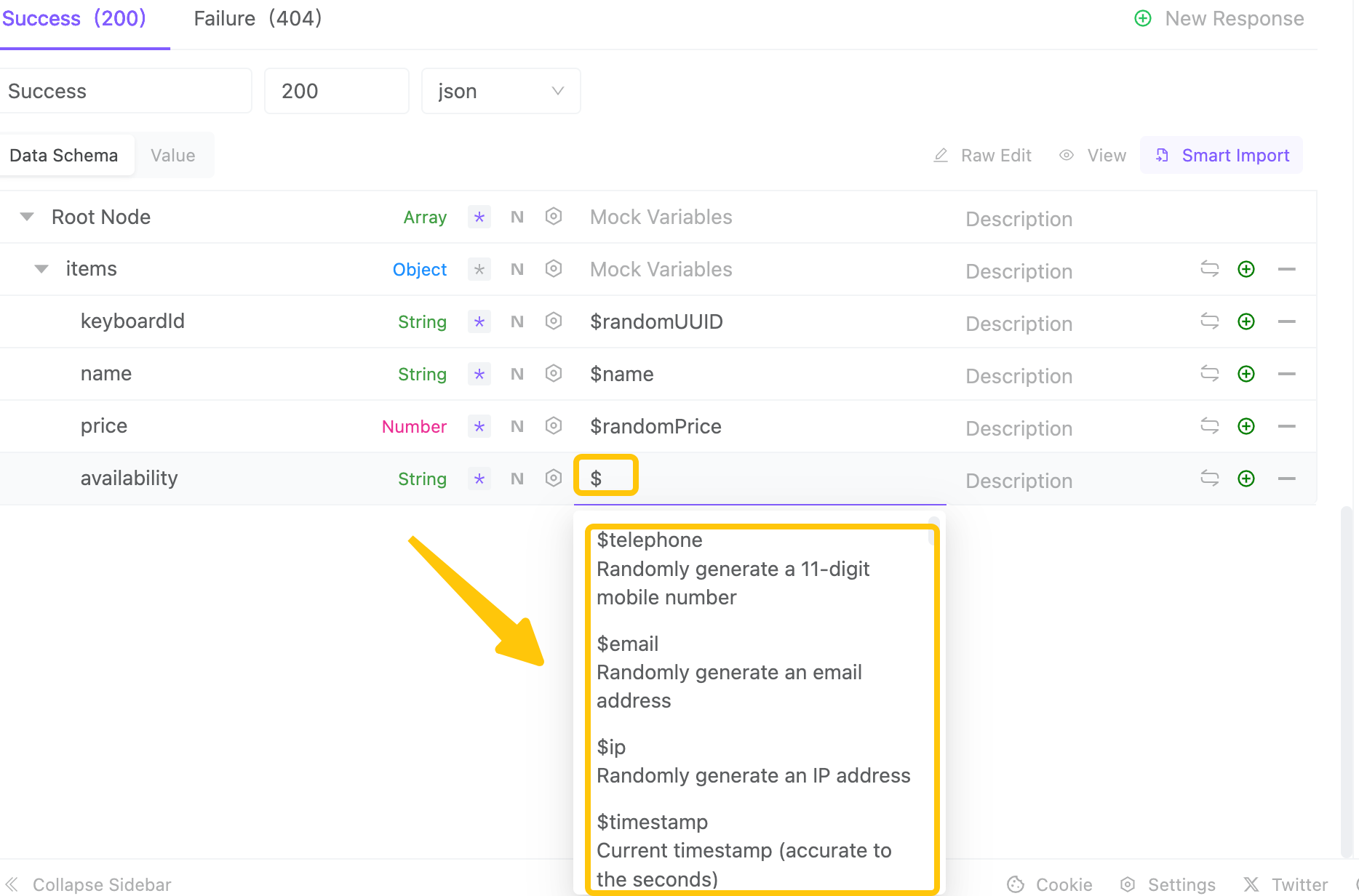
Then, when you open the"value Tab", clicking "Generate from Schema" will allow you to generate mock data.

Advanced Mocking
Sometimes, when the mocking requirement is very complex you need to use advanced mocking. Expectations is available for advanced mocking features.
Expectations
Expectation Conditions: Return different data based on parameters of different requests. For example, create the following two works:
- Return "order1" as the sale numbers when the request parameter "quantity" is 1.
- Return "order2" as the sale numbers when the request parameter "quantity" is 2.
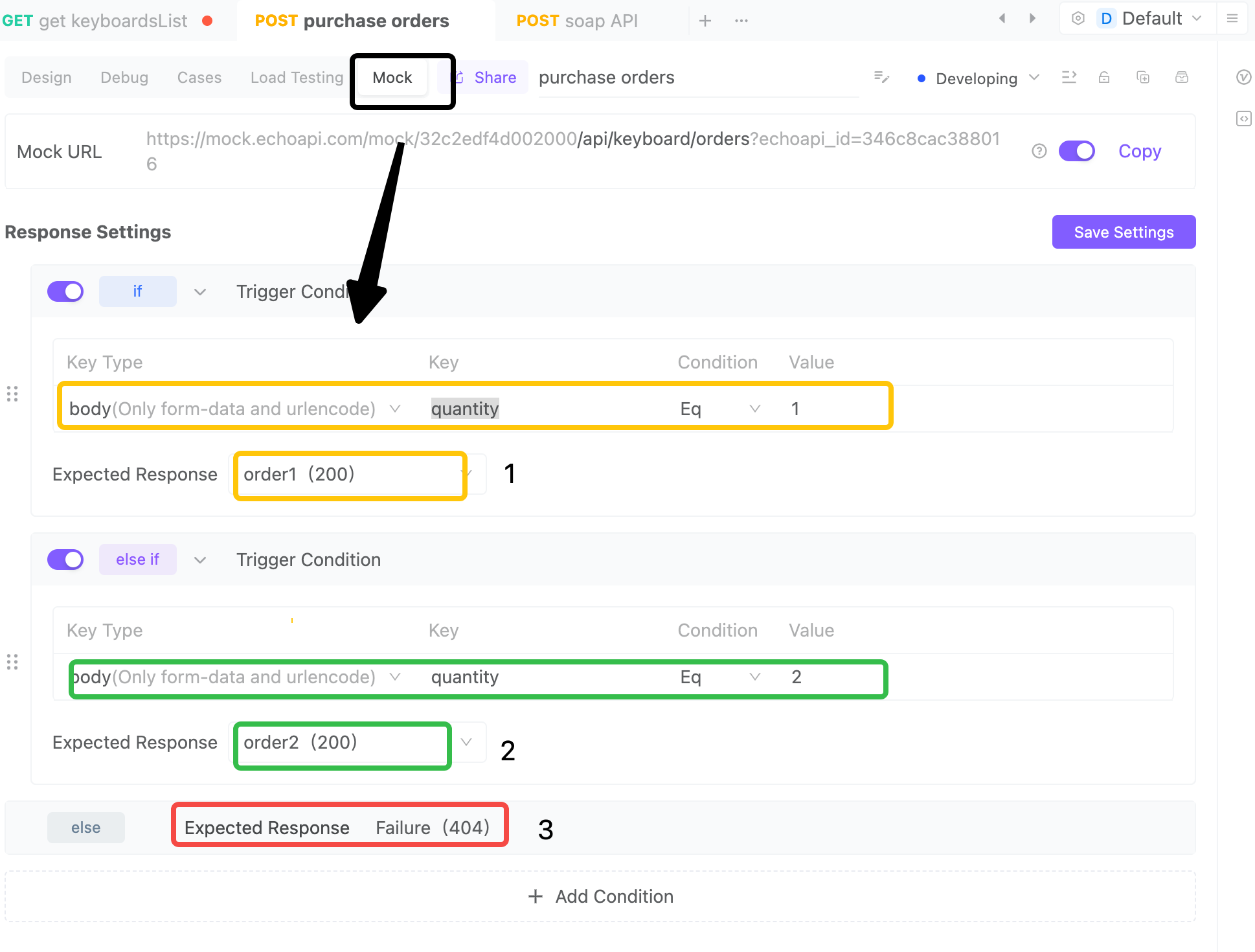
The essence of expectation is "when it matches a mock rule, it returns the response set in the rule." To achieve the above goals, we need to create two new expectations through advanced mocking.
- Return "order1" as the sale numbers when the request parameter "quantity" is 1.

- Return "order1" as the sale numbers when the request parameter "quantity" is 2.
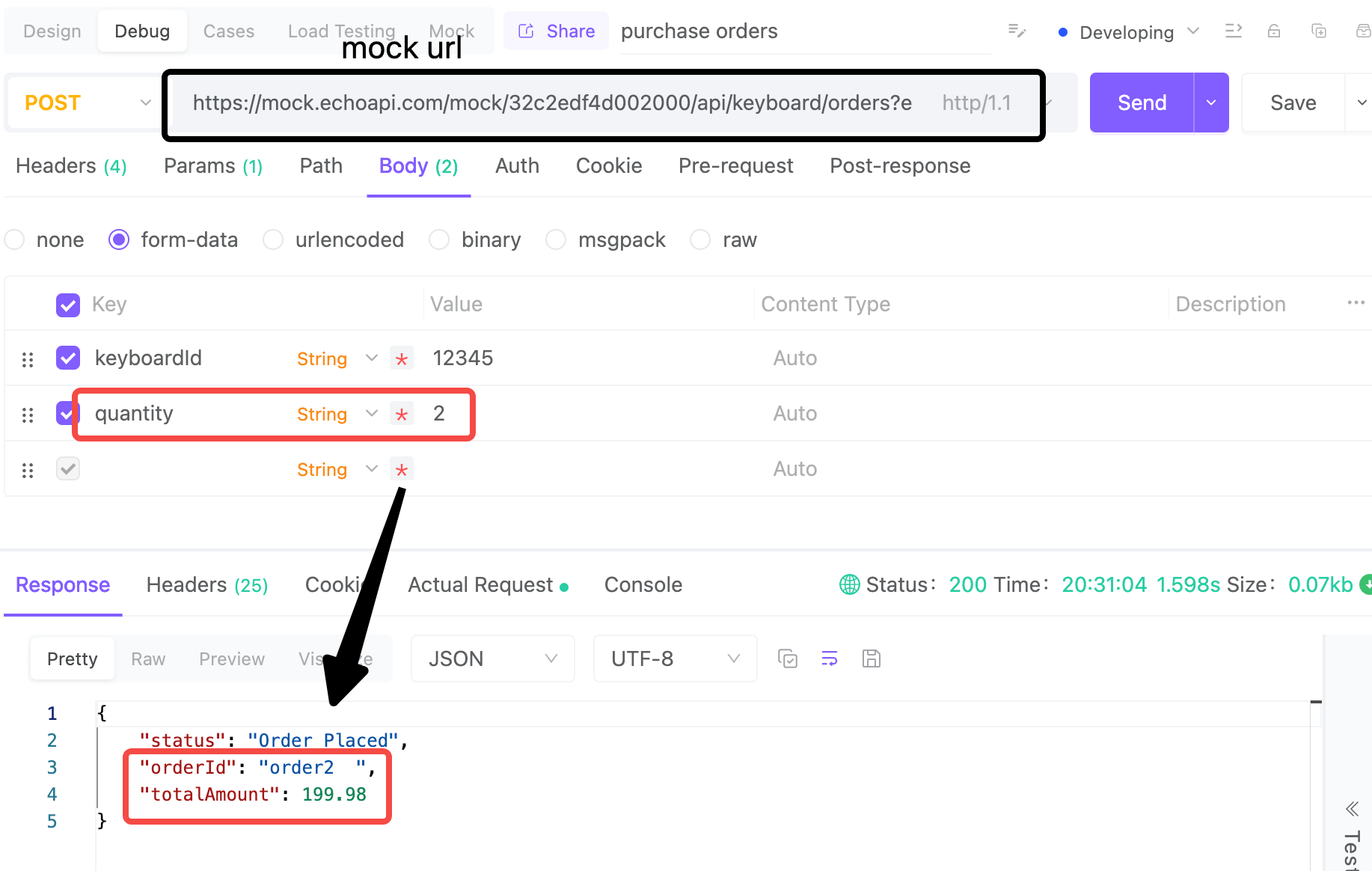
Note: When creating new expectations, you can also set parameters for Query, Header, Cookie, and Body. You can also set conditions such as equal to, less than, greater than, and exists.




 EchoAPI for VS Code
EchoAPI for VS Code

 EchoAPI for IntelliJ IDEA
EchoAPI for IntelliJ IDEA

 EchoAPl-Interceptor
EchoAPl-Interceptor

 EchoAPl CLI
EchoAPl CLI
 EchoAPI Client
EchoAPI Client API Design
API Design
 API Debug
API Debug
 API Documentation
API Documentation
 Mock Server
Mock Server








